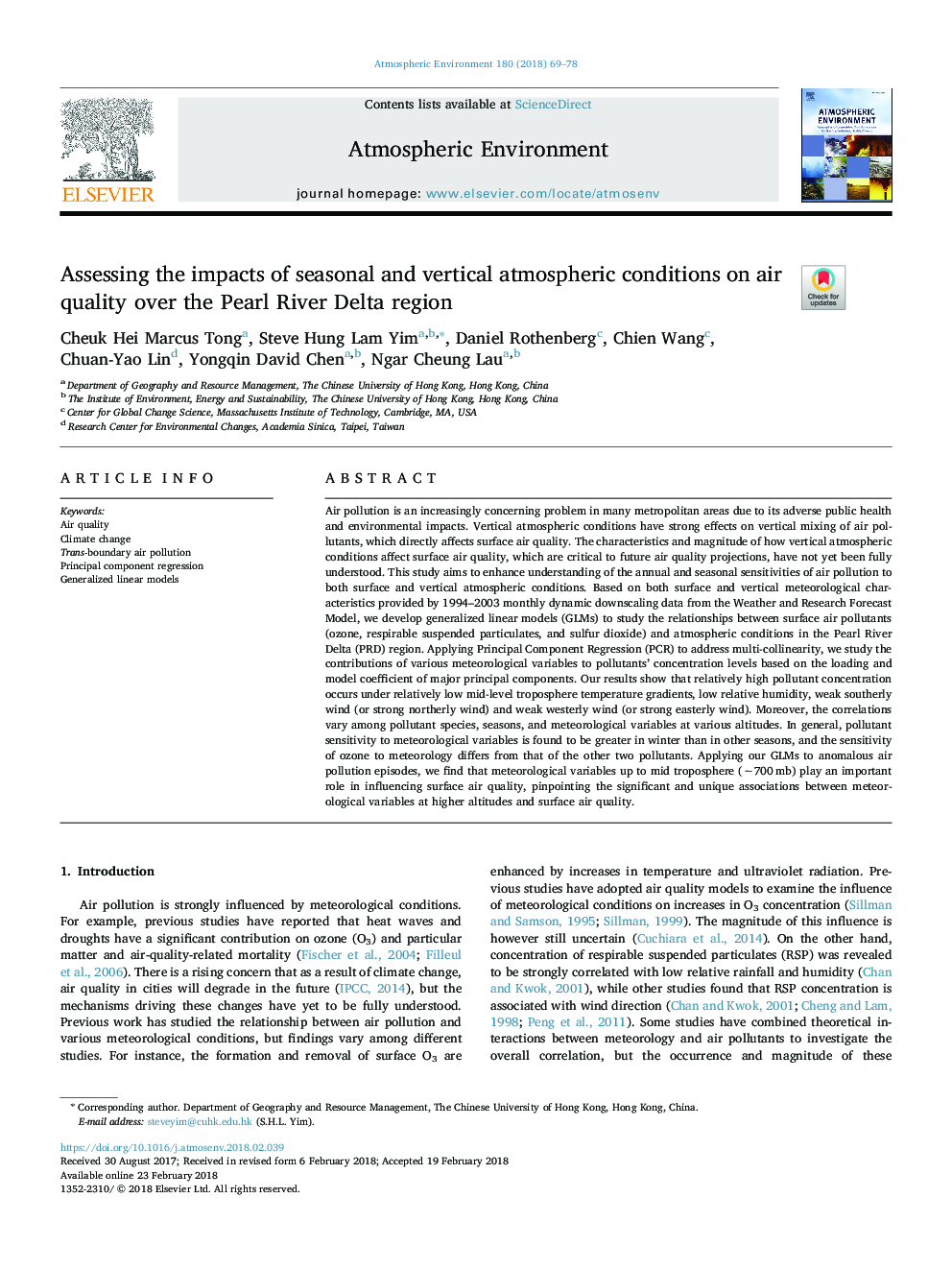| Article ID | Journal | Published Year | Pages | File Type |
|---|---|---|---|---|
| 8863936 | Atmospheric Environment | 2018 | 10 Pages |
Abstract
Air pollution is an increasingly concerning problem in many metropolitan areas due to its adverse public health and environmental impacts. Vertical atmospheric conditions have strong effects on vertical mixing of air pollutants, which directly affects surface air quality. The characteristics and magnitude of how vertical atmospheric conditions affect surface air quality, which are critical to future air quality projections, have not yet been fully understood. This study aims to enhance understanding of the annual and seasonal sensitivities of air pollution to both surface and vertical atmospheric conditions. Based on both surface and vertical meteorological characteristics provided by 1994-2003 monthly dynamic downscaling data from the Weather and Research Forecast Model, we develop generalized linear models (GLMs) to study the relationships between surface air pollutants (ozone, respirable suspended particulates, and sulfur dioxide) and atmospheric conditions in the Pearl River Delta (PRD) region. Applying Principal Component Regression (PCR) to address multi-collinearity, we study the contributions of various meteorological variables to pollutants' concentration levels based on the loading and model coefficient of major principal components. Our results show that relatively high pollutant concentration occurs under relatively low mid-level troposphere temperature gradients, low relative humidity, weak southerly wind (or strong northerly wind) and weak westerly wind (or strong easterly wind). Moreover, the correlations vary among pollutant species, seasons, and meteorological variables at various altitudes. In general, pollutant sensitivity to meteorological variables is found to be greater in winter than in other seasons, and the sensitivity of ozone to meteorology differs from that of the other two pollutants. Applying our GLMs to anomalous air pollution episodes, we find that meteorological variables up to mid troposphere (â¼700â¯mb) play an important role in influencing surface air quality, pinpointing the significant and unique associations between meteorological variables at higher altitudes and surface air quality.
Keywords
Related Topics
Physical Sciences and Engineering
Earth and Planetary Sciences
Atmospheric Science
Authors
Cheuk Hei Marcus Tong, Steve Hung Lam Yim, Daniel Rothenberg, Chien Wang, Chuan-Yao Lin, Yongqin David Chen, Ngar Cheung Lau,
